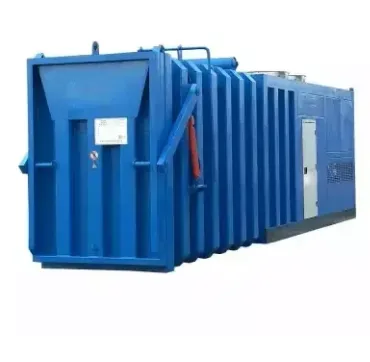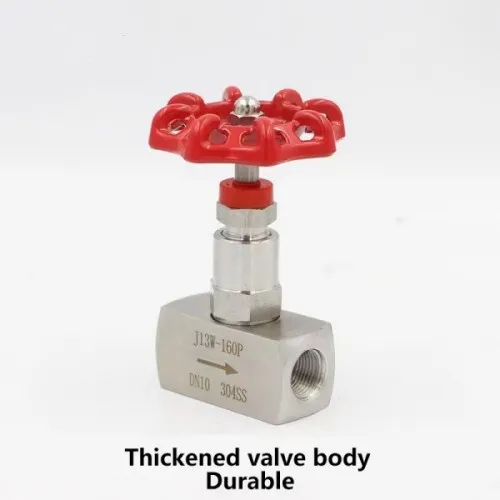Jan . 23, 2025 01:35
Back to list
6 check valves
The landscape of industrial fluid management is vast, yet one component stands out due to its vital function and versatility the check valve. Specifically, six variants of check valves serve various applications across multiple industries, each presenting unique features, advantages, and efficiencies. Understanding these can significantly enhance operational efficiency and reliability.
Ball check valves, meanwhile, offer a robust and straightforward solution for handling viscous fluids or slurries. By using a ball that rotates and reseats itself, these valves minimize wearing, making them ideal for wastewater treatment plants and other industrial applications involving particulates. Their ability to handle high viscosity materials ensures continuous and reliable performance, important in applications where media properties are challenging, and process continuity is crucial. Lastly, diaphragm check valves provide an exceptional option for applications where hygiene and sterility are top priorities. These valves employ a flexible diaphragm, which responds swiftly to changes in flow direction. This design is particularly beneficial in pharmaceutical and food processing industries, where contamination control is vital. The diaphragm effectively isolates the flow medium from the operational mechanism, maintaining sterility and enhancing process safety. Choosing the correct type of check valve for your specific application hinges on understanding the unique demands of your system. Factors such as pressure ratings, media characteristics, flowrate, and installation constraints play a significant role in determining the best fit. Professionals in the field emphasize the importance of aligning the valve type and material with the specific operational criteria and regulatory requirements. Expertise in selecting and installing check valves can mean the difference between seamless operation and costly disruptions. Industry authorities recommend regular performance assessments and maintenance checks to ensure these components function optimally. Trust established suppliers who offer detailed specifications, comprehensive service support, and robust warranties to uphold system performance and lifecycle cost-effectiveness. In embracing these six check valve variants, industries fortify their commitment to efficient, reliable, and safe fluid management. The right check valve not only ensures directional flow but also safeguards infrastructure, optimizing operational longevity and performance. As fluid control technology advances, remaining informed and adaptive to innovations in valve design and functionality becomes imperative for practitioners aiming to maintain industry-best practices and standards.


Ball check valves, meanwhile, offer a robust and straightforward solution for handling viscous fluids or slurries. By using a ball that rotates and reseats itself, these valves minimize wearing, making them ideal for wastewater treatment plants and other industrial applications involving particulates. Their ability to handle high viscosity materials ensures continuous and reliable performance, important in applications where media properties are challenging, and process continuity is crucial. Lastly, diaphragm check valves provide an exceptional option for applications where hygiene and sterility are top priorities. These valves employ a flexible diaphragm, which responds swiftly to changes in flow direction. This design is particularly beneficial in pharmaceutical and food processing industries, where contamination control is vital. The diaphragm effectively isolates the flow medium from the operational mechanism, maintaining sterility and enhancing process safety. Choosing the correct type of check valve for your specific application hinges on understanding the unique demands of your system. Factors such as pressure ratings, media characteristics, flowrate, and installation constraints play a significant role in determining the best fit. Professionals in the field emphasize the importance of aligning the valve type and material with the specific operational criteria and regulatory requirements. Expertise in selecting and installing check valves can mean the difference between seamless operation and costly disruptions. Industry authorities recommend regular performance assessments and maintenance checks to ensure these components function optimally. Trust established suppliers who offer detailed specifications, comprehensive service support, and robust warranties to uphold system performance and lifecycle cost-effectiveness. In embracing these six check valve variants, industries fortify their commitment to efficient, reliable, and safe fluid management. The right check valve not only ensures directional flow but also safeguards infrastructure, optimizing operational longevity and performance. As fluid control technology advances, remaining informed and adaptive to innovations in valve design and functionality becomes imperative for practitioners aiming to maintain industry-best practices and standards.
Next:
Latest news
-
Breakthrough in Domestic Low Temperature Valve Technology in ChinaNewsAug.18,2025
-
From Machinery to Intelligent Brain: The Digital Transformation Wave of the Valve IndustryNewsAug.18,2025
-
PCVEXPO 2025NewsAug.18,2025
-
The Key to Fluid Control: Exploring the Advantages of Ball Valves in Industrial SystemsNewsJul.09,2025
-
The Versatile World of 1, 2, and 3 Piece Ball ValvesNewsJul.09,2025
-
Stainless Steel Ball Valves: The Ideal Choice for Efficient Flow ControlNewsJul.09,2025
-
Optimizing Fluid Control with Ball Float ValvesNewsJul.09,2025




